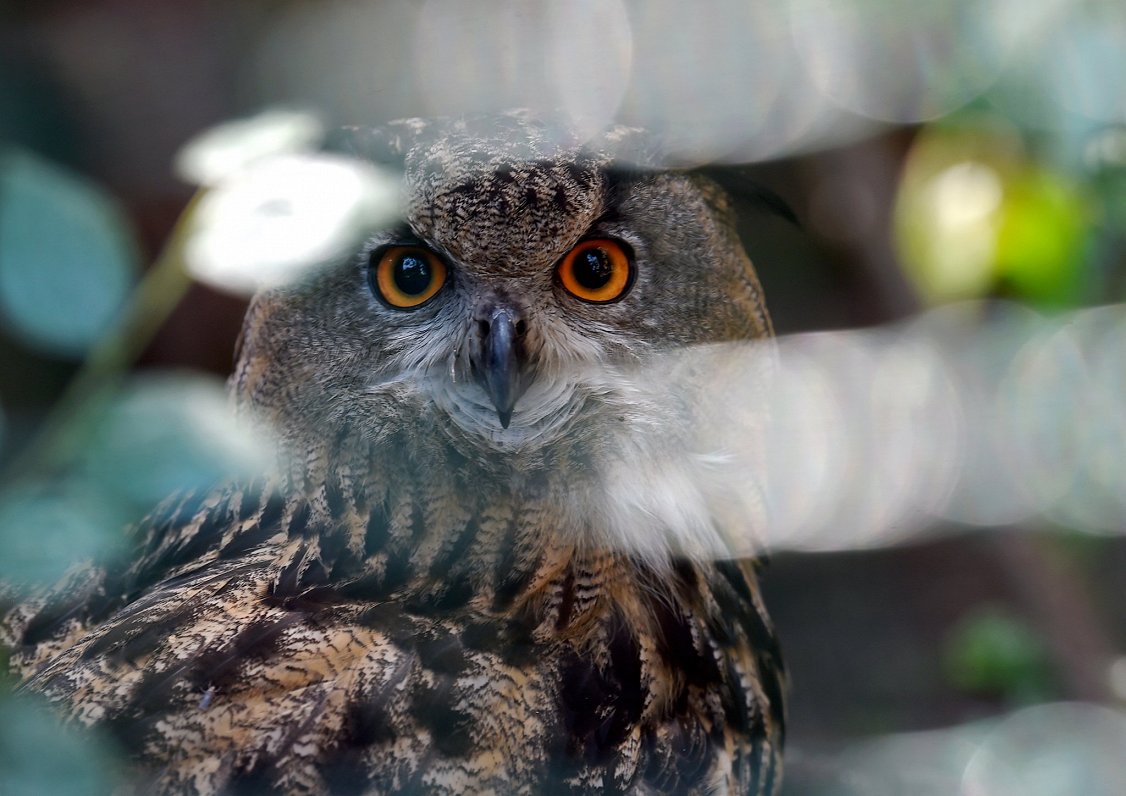"At the moment, the population estimate is 25 to 70 pairs," explained LOB Owl Program manager Pēteris Daknis, though he admits that the data is inaccurate because the eagle owl hides very well.
In the middle of March, the nesting season begins. Incubation lasts for 35 days, and chicks hatch from late April onward, and can be considered adults after 150-170 days. One clutch can contain from one to four eggs, but not every chick will reach sexual maturity a year later.
The wingspan of eagle owls can reach 1.8 meters, making them a spectacular sight in flight. The eagle owl is a predator – mice and other small mammals are on his menu – and is territorial but if more difficult conditions arise in winter, it can also wander elsewhere.
In order to know the places where each individual owl lives, you need to be able to recognize the voice of the owl.
"We call them syllables. An eagle owl's call is a two-syllable 'oo' or 'oo-oo'. But a long-eared owl has a monosyllabic call and a slightly higher frequency, too. Then there's the Ural owl, and the Ural owl is more likely to be mistaken for a dog than an owl; it has a "uh-uh" sound, revealed the ornithologist.
Eagle owls naturally nest on the ground, near tree roots. In order to raise them from these unsafe roosts, around 400 artificial nests have been installed in trees in Latvia, which they are also happy to occupy. Audio recorders have been attached to some trees to collect acoustic biodata. The receiver performs the recording function from 18.00 until the morning. On average, 20-40 such devices are installed annually. After that, all the collected information is processed by a computer.
"It is very interesting for the eagle owl that you can identify a specific individual by voice. A person can't, but a computer can, and that's why we put those recorders there," said Daknis.
Residents are also invited to record the cries of the owl in order to learn about the hitherto undiscovered territories inhabited by them. Then it will be possible to ensure the protection of this species by creating a micro-reserve or installing an artificial nesting place.
Recordings can be posted on the dabasdati.lv website and can also be sent to the Latvian Ornithology Society at the e-mail address [email protected]. The lifespan of an eagle owl in the wild can reach about 20 years, and in captivity even up to 70 years. LTV went to the Riga Zoo to get to know these fascinating creatures better. It turns out that the 'ears' of these birds are just a decorative element.
"They are just feathers, they are not real ears. With them, he actually says what his mood is," said the representative of the Riga National Zoo, Māris Lielkalns. Moreover, the 'ears' are not symmetrical; they stand slightly askew. While sitting, Ūpis moves his head on its axis to get a 'fix' on where prey might be located.
"Ūpis sees equally well during the day and at night, but during the day, as there is too much noise and too many other activities, he prefers to sit quietly, pretending to be a stump – but at night he can roam again with his hearing," explained Lielkalns.
Owls have much better eyesight than humans. They are very disturbed by the presence of people; if you see or hear them, do not approach them, it may even affect nesting. Although signs are posted that no motorized vehicles are allowed in protected areas, the forests are being crisscrossed by dirt bikes and quad bikes, with the result that the eagle owl will no longer nest in these areas.
"We put up signs in the area, we work with the municipal police, with local governments and try to solve the issue and bring more and more drivers who do not follow the rules to justice. But it is clear – if the legislation is as it is, and they drive in forests without license plates, then the chance of us catching them is very small," admitted Andris Upenieks, forest ranger of Jugla Forestry and SIA "Rīgas meži".
Catching the violators is extremely difficult and this problem has been faced for about 15 years. Two special routes have even been created - in the Jaunmārupe-Mārupe forest and at the sports complex "333", where motorcyclists can ride through the forest in a certain area. These routes are closed if there is a risk of fire, and there are also deadlines for when and which marked route can be driven, as there is a section that is close to a bird sanctuary area. The route that must not be taken is marked, but sadly there is no shortage of motorcyclists who ignore the rules.
One of the solutions, in order to be able to punish violators more effectively, would be to establish mandatory registration number plates for all motorcycles.
Even one disturbance can prove fatal for the eagle owl. At the end of April, when there are usually the first warm days, is the time when newly hatched chicks need to be warmed and fed.
"If at that moment some disturbance drives the owls from the nest, then ravens have the opportunity to peck at the eggs, or if the young ones are very small, they can carry off the young, and then the nesting season is over. One approach to the nest at the wrong time is enough for something like this to happen," warned the ornithologist.




























